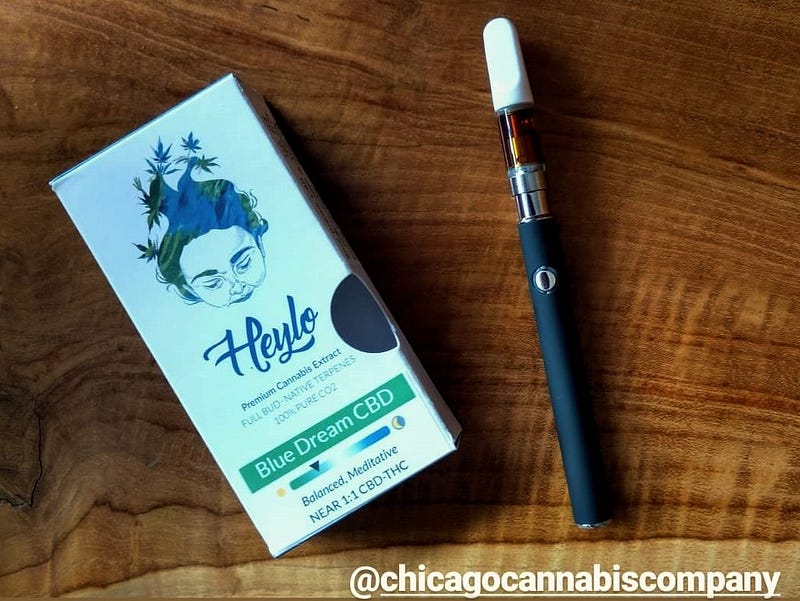Indica or Sativa?

Indica or Sativa?
Cannabis consumers can often develop preferences for either indica or sativa "strains". However, this classification is not necessarily a good guide and its importance tends to be over-emphasized.
A sativa high is often characterized as uplifting and energetic. The effects of sativa strains may be described as heady, even hallucinatory. Sativa strains are said to incite an optimistic perspective and sense of wellness.
Indica strains are more likely to be used for relaxation, stress relief, and to achieve calm. Indica "strains" are seen as aides for overall body pain relief and are often used in the treatment of insomnia, and indicas with elevated THC content are thought to be potent sedatives, causing an “in-da-couch” body high effect.
Despite these generalizations, you may experience opposite effects to those expected. A sativa can make you sleepy and an indica can make you feel energized and uplifted. Take for example the (subjective) effects of two sativa strains below:

|
 |
When solely basing your consumption on "indica" vs. "sativa" you're missing out on key knowledge that will enhance and simplify your weed experience. Gaining an understanding of the plant compounds that make cannabis so unique is the first step!
Beyond Indica vs. Sativa
For a clearer understanding of the medicinal properties of cannabis, a better classification system beyond sativa and indica is required. It may make sense to classify cannabis according to cannabinoid and terpene levels for both medical and recreational purposes. After all, the ratios of cannabinoids and terpenoids present in cannabis flowers are a more meaningful profile of the plant’s genetic identity and chemical composition.
The following graphic illustrates plant morphology — a popular understanding of how to classify cannabis cultivars:
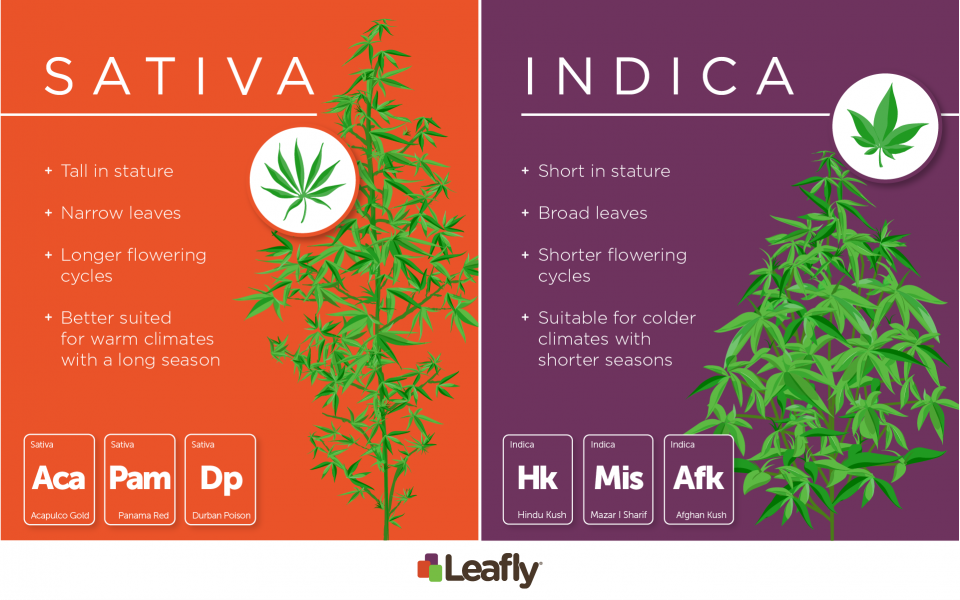
The chemotypes of individual varities of cannabis are too complex to be defined by one of two phenotype categories.
While sativa and indica may be useful classifications for cultivators, these two categories alone are not sufficient to fully describe the chemistry of cannabis or the therapeutic effects of interest to most consumers. In fact, they are likely to create confusion in the marketplace, especially when people respond in different ways to the same product.
Every person’s Endocannabinoid System (ECS) will respond differently to the chemical compounds in cannabis — even to cannabinoids at the lowest concentrations. Along with the chemical makeup of the cannabinoid product you are consuming, the context of your consumption is equally important.
THC — not all it’s cracked up to be
Although THC concentration is often considered to be the main indicator of “quality” or efficacy, a more comprehensive approach, one that includes the full-range of cannabinoids and terpenoids, has become possible.
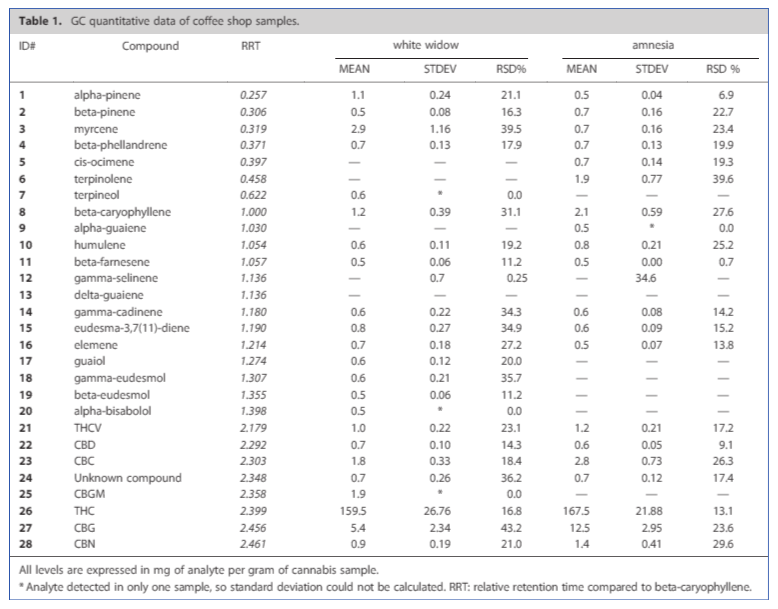
Different compositions or chemical profiles of cannabinoids and terpenoids are likely to exhibit distinctive medicinal properties and, therefore, provide a better understanding of expected therapeutic or psychoactive effects.
A greater emphasis on cannabinoid and terpene profiles along with a wide-scale implementation of a methodology for interpreting the complexity of the various cannabinoid and terpenes profiles will help consumers make sense the expected therapeutic or psychoactive effects of cannabis. In turn, this will positively impact their experience with cannabis.
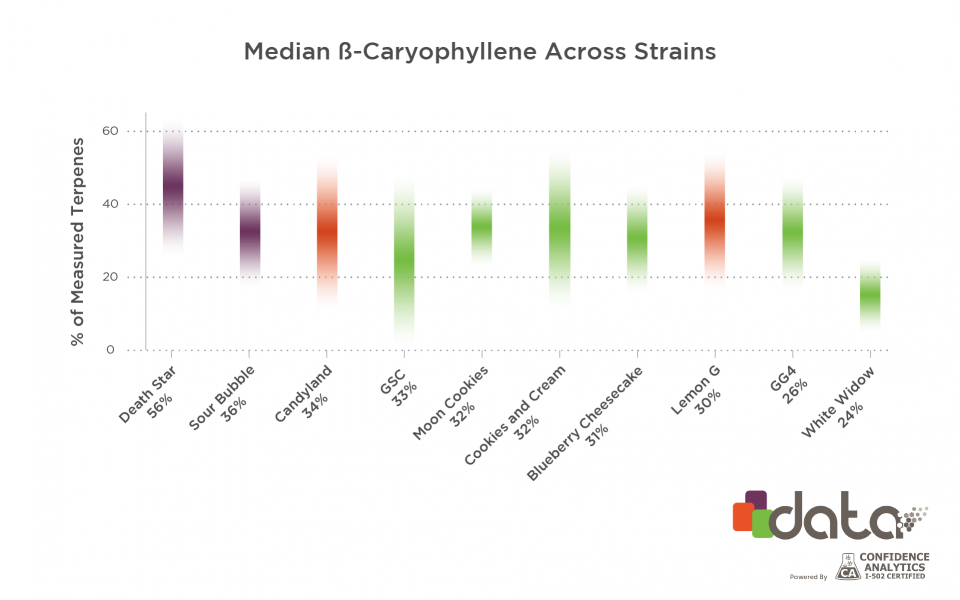
Cannabis is a Multi-molecule Plant
As an industry, it will be important to acknowledge what we don’t know and still need to learn and to humble ourselves to continue to evolve. We need a fundamental evolution in consumer education to maximize appreciation of the complexity of the multi-molecule nature of the cannabis plant.
The high number of active components found in cannabis complicate the conventional approach to studying a single active compound, but with well-designed studies and/or clinical trials, and isolating distinct chemical varieties, correlations may be observed between specific chemical characteristics and potential, beneficial biological effects.
Confidence Analytics, an I-502 certified cannabis testing laboratory located in Seattle, WA, is just one lab working to bridge the gap between the chemical complexity of cannabis and the need to clearly distinguish between various cannabis chemovars (strains), beyond just THC concentration and “sativa” or “indica”.
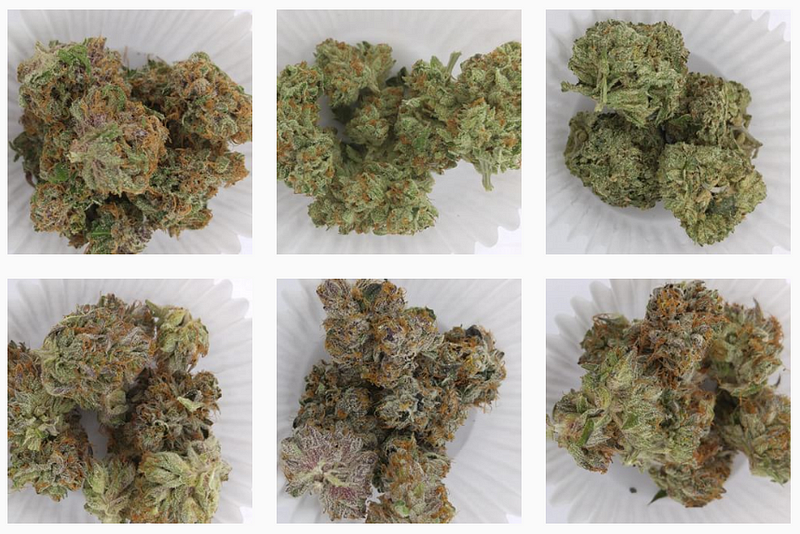
Confidence Analytics has collected over 50,000 samples from the Washington cannabis market and is working with Leafly to analyze and visualize the data. Collecting and analyzing data on cannabis samples is the first step to finding a standardized approach for chemotaxonomic classification and studying the efficacy and applicability of terpenes and cannabinoids.

|
 |
Looking to the Future
Consumers may soon find products that are not labelled as “sativas” or “indicas.” They may also find that certain cultivators will start producing more balanced strains over selecting strains solely for their high-concentration of THC.
Simply labeling a product as “rise” or “energize” will no longer suffice to convey the character of individual products as each body's reaction to a given compound can vary widely.
Will medical patients new to cannabis take strain names like “White Widow”, “Cookies and Cream”, or “Candyland” seriously?
